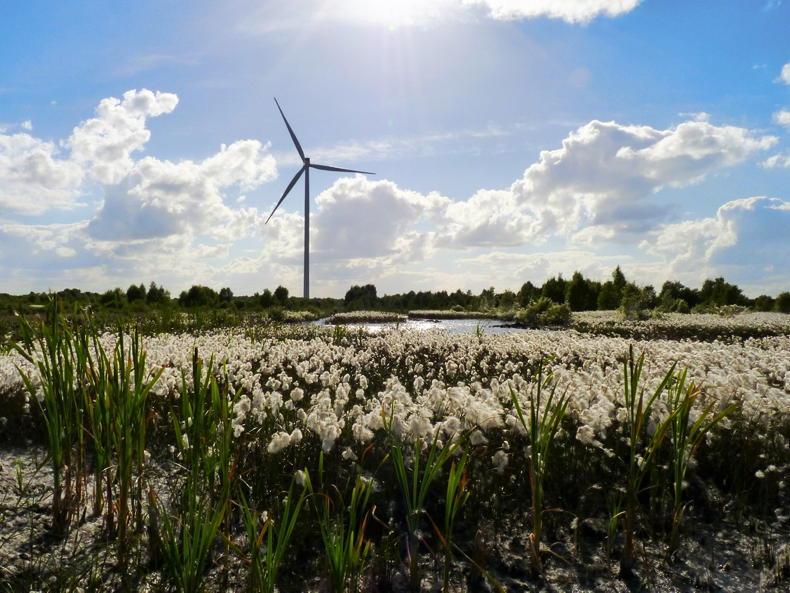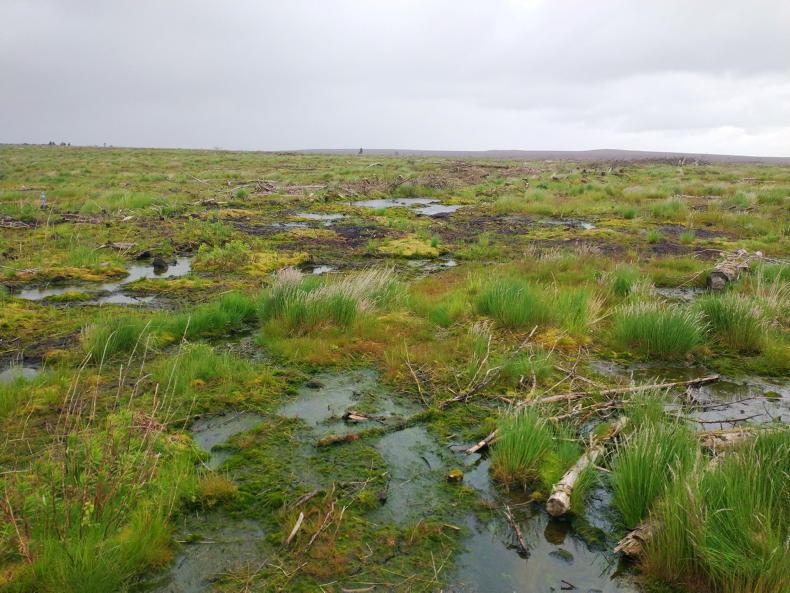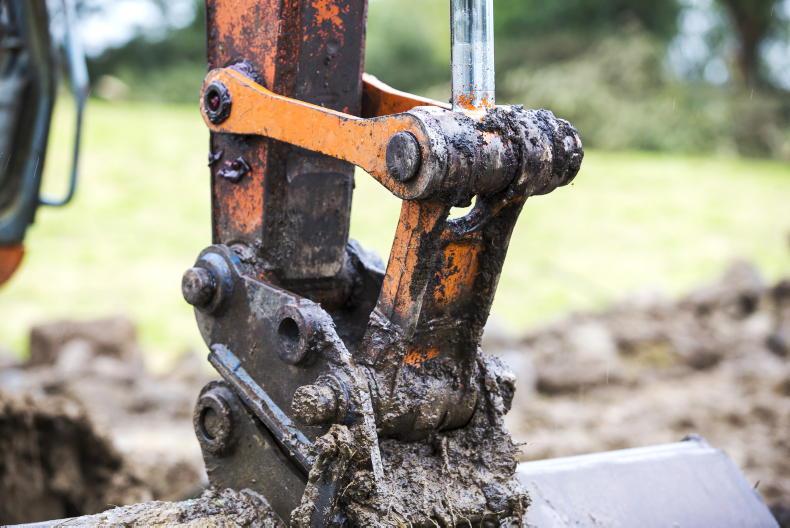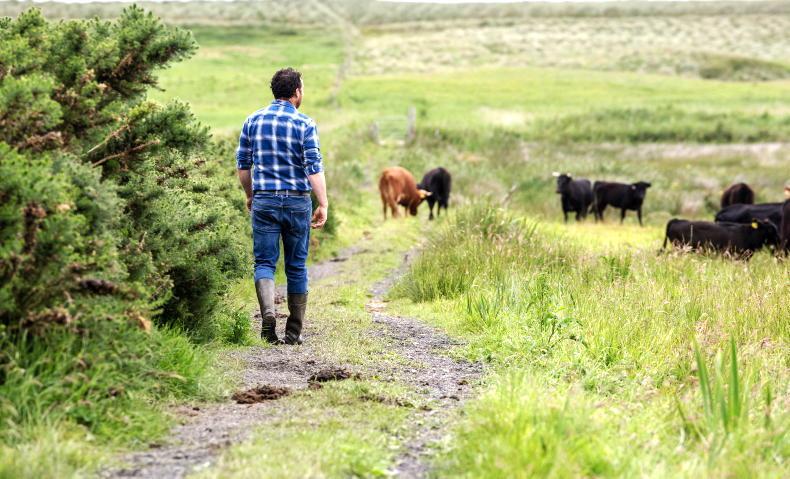Work should be complete in spring 2023 on a new peatland map for NI which will provide an accurate picture of where peatland is, how much peat these areas contain and what condition they are in.
The mapping exercise began in the summer of 2021 in a project led by Ulster Wildlife in partnership with researchers at the James Hutton Institute in Scotland, with support from the Esmée Fairbairn Foundation and DAERA. Baseline data for the study was provided by AFBI.
Dr Matt Aitkenhead, a soil scientist from the James Hutton Institute, said the aim of the work is to inform long-term policy decisions and identify the most appropriate areas to target peatland restoration work in NI.
“We want to identify the places where we can have most effect – the low-hanging fruit where there is a large area of peat, with easy access,” he told the Irish Farmers Journal.
The mapping exercise has utilised various existing sources of information, with remote sensing technology then used to identify features in the landscape such as drainage channels, and field visits done to measure the depth of peat at various locations.
Similar peat maps have already been produced in Scotland and the Falkland Islands.
Restore
In February 2020 the Scottish government committed £250m to restore up to 220,000ha of peatland over the next 10 years to 2030.
However, estimates suggest that over 20% of land in Scotland is peat-based soil, with the total peatland area extending to nearly 2m ha. “About 80% of it needs work,” suggests Matt Aitkenhead.
So while the Scottish government’s financial commitment is significant, there is the same need as in NI to prioritise spending to where the impact will be greatest.
Consultation
Compared to Scotland, a similar percentage of NI is covered by peat, with a DAERA consultation paper on a new peatland strategy published in June 2021 estimating that 12% of NI land area is a combination of lowland raised bogs, blanket bogs and fens. In total, the DAERA paper estimated that 18% of NI land is peat soil.
While the DAERA consultation document suggested that the “majority” of peatland habitats are in an unfavourable state, others have estimated that around 80% need restoration work.
That will come at a substantial cost, with funding expected to be delivered through the Stormont Executive’s Green Growth Strategy for NI.
Why restoration work is necessary
Across the UK it is estimated that around 3.2bn tonnes of carbon is locked away in peatland, but rather than being in a state to sequester more carbon, much of our peatland is now an active source of emissions.
In NI, data recorded by DAERA was revised in 2019 to reflect new methods of assessing emissions from wetlands as part of the “land use change” sector.
With this revision now included, the sector currently accounts for 11.3% of total NI emissions.
According to Aitkenhead, there is an opportunity to reverse the trend, and ensure land use becomes a net carbon sink in the future.
Historic activity
The main issue to address is historic activity such as drainage of peatland for agriculture or forestry, as well as over-grazing by livestock in certain situations. This leads to the land drying out, and carbon being released.
But not all carbon is lost into the air. “Where peatland is in poor condition there is also a lot of carbon in the water,” said Aitkenhead.
This can typically be seen as a brown discolouration. With 70% of the UK’s drinking water coming from upland areas, removing the discolouration is a significant cost for water companies.
Solution
The answer to the various issues mainly relies on blocking drains and ditches, raising the water table to around 30cm below the surface.
“Any amount of raising the water table reduces emissions. Once you get to just below the surface, the emissions stop,” said Aitkenhead.
Those conditions should encourage bog plants, and sphagnum moss in particular, to thrive. Ultimately, restored peatland will again be in a position to capture carbon from the atmosphere.
Other benefits
There are other benefits from peatland restoration.
By slowing water flow through peatland, there is a lower flood risk in nearby towns and villages, while a bog that is restored will have water close to the surface meaning the risk of wildfires is reduced.
Restoring peatland in upland areas should also reduce the likelihood of bog slides.
However, Aitkenhead warns that time is short for progress to be made, especially given the dry conditions experienced in recent summers, which potentially will become more frequent as our climate changes.
“We aim to finish our mapping exercise by the end of March – the report will go to DAERA and stakeholders. But it is not the final work on it – we need future monitoring of progress to assess the effectiveness of the actions that are taken,” he concluded.
A second article in next week’s edition will look at examples of work done to restore a local bog and the policies necessary to ensure farmers and wider society benefit from peatland restoration.
Read more
Less carbon capture attributed to NI soils
Proposed peat compost ban for NI dropped
Work should be complete in spring 2023 on a new peatland map for NI which will provide an accurate picture of where peatland is, how much peat these areas contain and what condition they are in.
The mapping exercise began in the summer of 2021 in a project led by Ulster Wildlife in partnership with researchers at the James Hutton Institute in Scotland, with support from the Esmée Fairbairn Foundation and DAERA. Baseline data for the study was provided by AFBI.
Dr Matt Aitkenhead, a soil scientist from the James Hutton Institute, said the aim of the work is to inform long-term policy decisions and identify the most appropriate areas to target peatland restoration work in NI.
“We want to identify the places where we can have most effect – the low-hanging fruit where there is a large area of peat, with easy access,” he told the Irish Farmers Journal.
The mapping exercise has utilised various existing sources of information, with remote sensing technology then used to identify features in the landscape such as drainage channels, and field visits done to measure the depth of peat at various locations.
Similar peat maps have already been produced in Scotland and the Falkland Islands.
Restore
In February 2020 the Scottish government committed £250m to restore up to 220,000ha of peatland over the next 10 years to 2030.
However, estimates suggest that over 20% of land in Scotland is peat-based soil, with the total peatland area extending to nearly 2m ha. “About 80% of it needs work,” suggests Matt Aitkenhead.
So while the Scottish government’s financial commitment is significant, there is the same need as in NI to prioritise spending to where the impact will be greatest.
Consultation
Compared to Scotland, a similar percentage of NI is covered by peat, with a DAERA consultation paper on a new peatland strategy published in June 2021 estimating that 12% of NI land area is a combination of lowland raised bogs, blanket bogs and fens. In total, the DAERA paper estimated that 18% of NI land is peat soil.
While the DAERA consultation document suggested that the “majority” of peatland habitats are in an unfavourable state, others have estimated that around 80% need restoration work.
That will come at a substantial cost, with funding expected to be delivered through the Stormont Executive’s Green Growth Strategy for NI.
Why restoration work is necessary
Across the UK it is estimated that around 3.2bn tonnes of carbon is locked away in peatland, but rather than being in a state to sequester more carbon, much of our peatland is now an active source of emissions.
In NI, data recorded by DAERA was revised in 2019 to reflect new methods of assessing emissions from wetlands as part of the “land use change” sector.
With this revision now included, the sector currently accounts for 11.3% of total NI emissions.
According to Aitkenhead, there is an opportunity to reverse the trend, and ensure land use becomes a net carbon sink in the future.
Historic activity
The main issue to address is historic activity such as drainage of peatland for agriculture or forestry, as well as over-grazing by livestock in certain situations. This leads to the land drying out, and carbon being released.
But not all carbon is lost into the air. “Where peatland is in poor condition there is also a lot of carbon in the water,” said Aitkenhead.
This can typically be seen as a brown discolouration. With 70% of the UK’s drinking water coming from upland areas, removing the discolouration is a significant cost for water companies.
Solution
The answer to the various issues mainly relies on blocking drains and ditches, raising the water table to around 30cm below the surface.
“Any amount of raising the water table reduces emissions. Once you get to just below the surface, the emissions stop,” said Aitkenhead.
Those conditions should encourage bog plants, and sphagnum moss in particular, to thrive. Ultimately, restored peatland will again be in a position to capture carbon from the atmosphere.
Other benefits
There are other benefits from peatland restoration.
By slowing water flow through peatland, there is a lower flood risk in nearby towns and villages, while a bog that is restored will have water close to the surface meaning the risk of wildfires is reduced.
Restoring peatland in upland areas should also reduce the likelihood of bog slides.
However, Aitkenhead warns that time is short for progress to be made, especially given the dry conditions experienced in recent summers, which potentially will become more frequent as our climate changes.
“We aim to finish our mapping exercise by the end of March – the report will go to DAERA and stakeholders. But it is not the final work on it – we need future monitoring of progress to assess the effectiveness of the actions that are taken,” he concluded.
A second article in next week’s edition will look at examples of work done to restore a local bog and the policies necessary to ensure farmers and wider society benefit from peatland restoration.
Read more
Less carbon capture attributed to NI soils
Proposed peat compost ban for NI dropped









SHARING OPTIONS